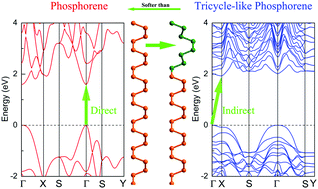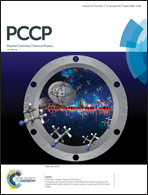Structural, elastic, electronic, and optical properties of the tricycle-like phosphorene†
Abstract
Phosphorene exhibits great potential applications in nanoelectronics due to its relatively large and direct band gap and good charge carrier mobility, and thus has attracted extensive attentions over the past few years. In this study, a novel hybrid phosphorene with a tricycle-like bulge is proposed using density functional theory calculations. Herein, structural stability, elastic, electronic, and optical properties have been addressed. It is found that all the hybrid phosphorenes are stable, and their cohesive energies are very close to that of black phosphorene monolayer. Due to the tricycle-like bulge, these hybrid layers are much softer than the black phosphorene. Their electronic band structures show that they are semiconductors with a robust indirect band gap, and their band gaps are strongly dependent on the sizes. Spatial charge distribution to the valence band maximum and the conduction band minimum is analyzed to explore the origin of the indirect band gap features. By calculating the complex dielectric function, optical properties have been discussed. Our results suggest that the hybrid phosphorenes with well structural stability, robust indirect band gaps, flexible property, and good optical absorption hold great promise for applications in the field of visible light harvesting and flexible nanoelectronic devices.



 Please wait while we load your content...
Please wait while we load your content...